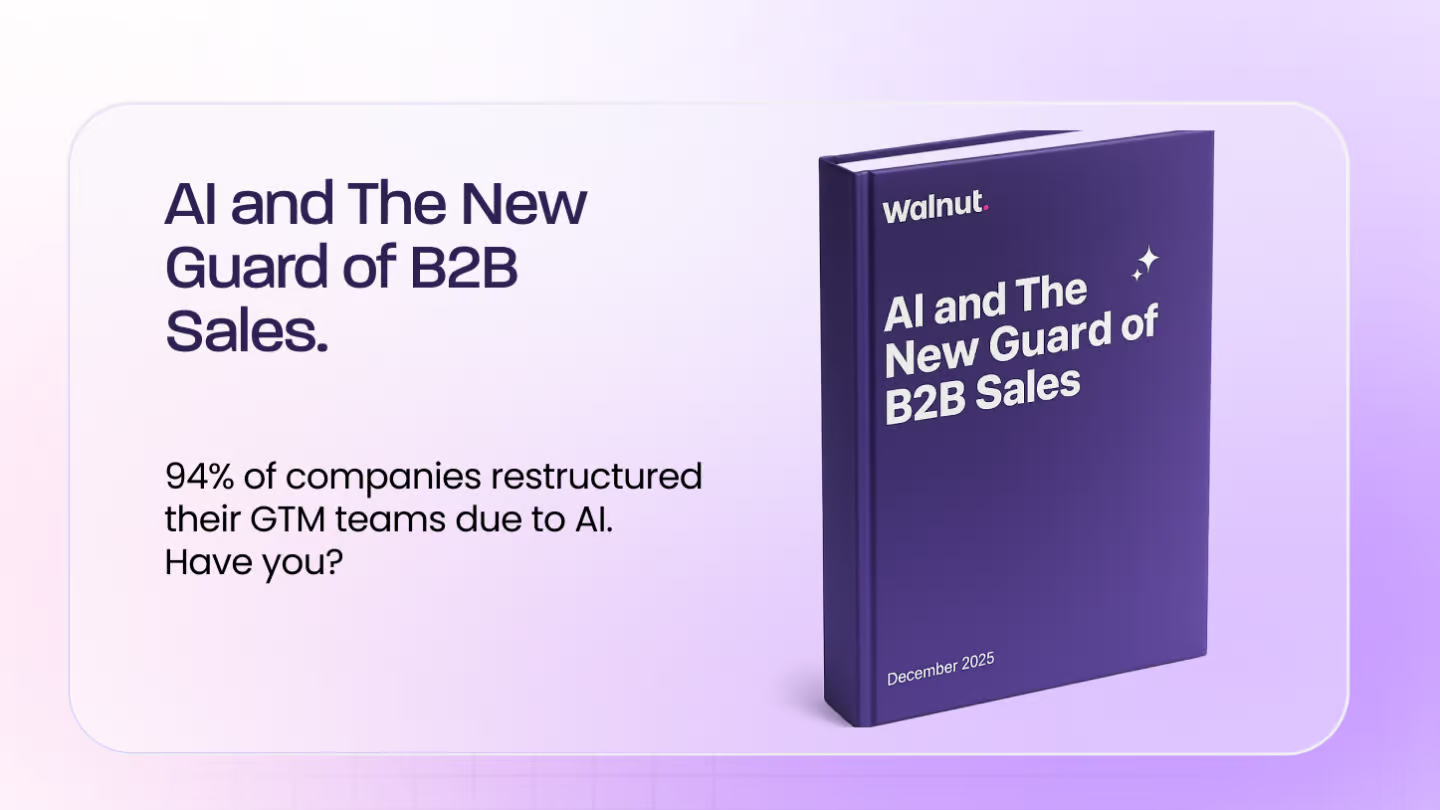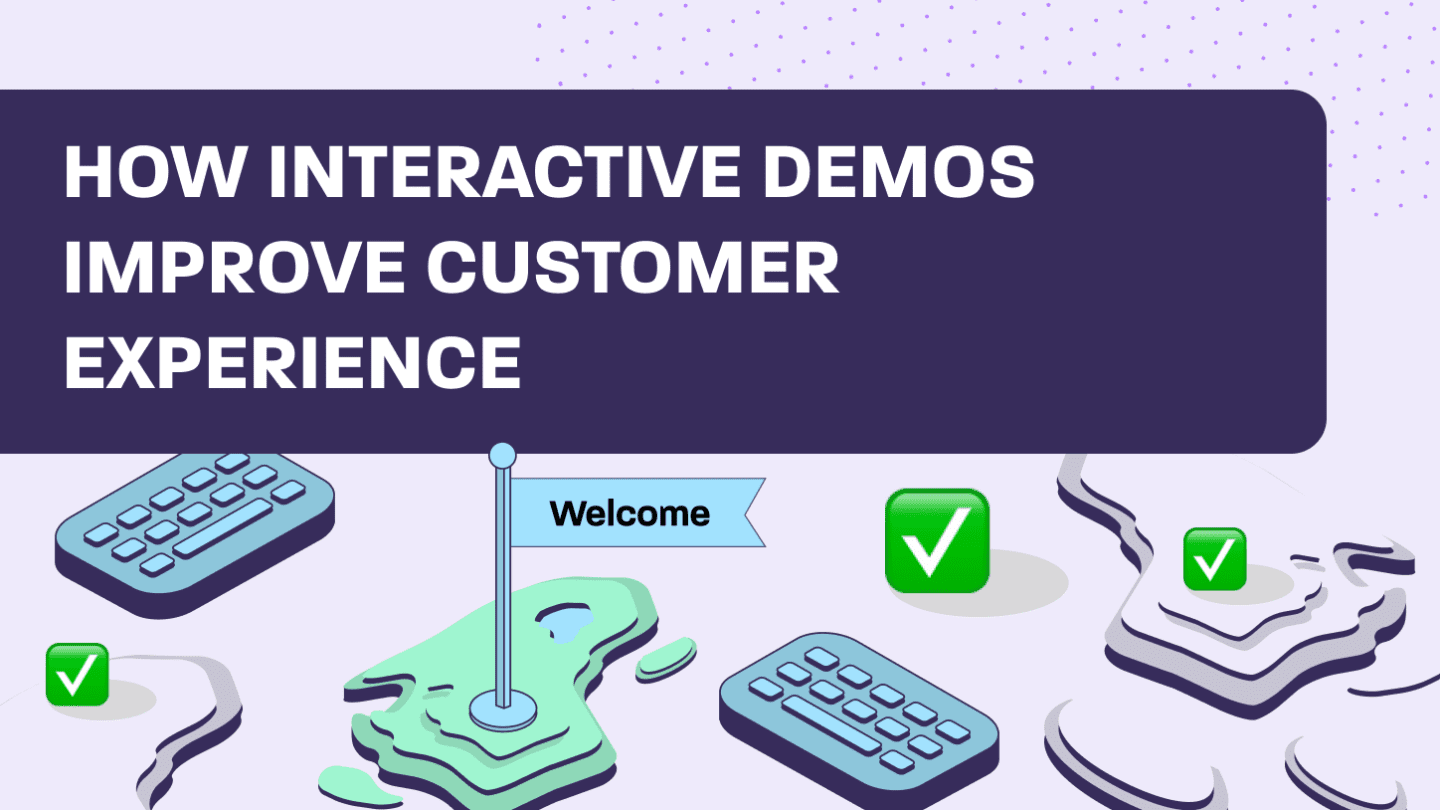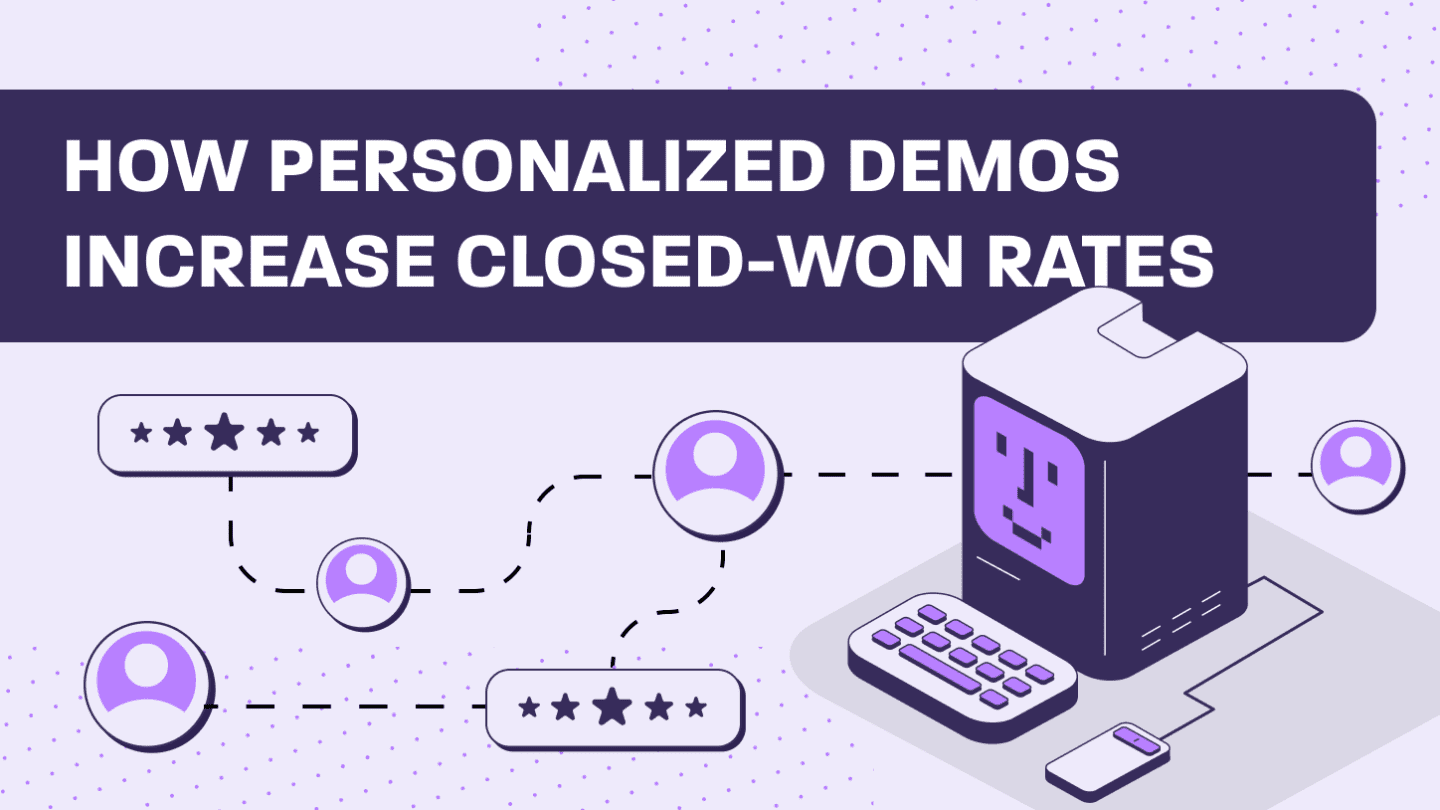Updated on October 14, 2024.
Starting and growing a Software as a Service (SaaS) company is often challenging for the most part. It’s hard to grow when you constantly have to deal with helping prospects see the value in your product, onboarding new customers, and fighting against churn. But that is not to say it’s impossible.
There are many fast-growing companies like Slack, Datadog, Pinterest, etc., who have set themselves aside from the rest and become significant players in the SaaS industry by using a product-led strategy.
These companies are so successful because they’ve taken advantage of the massive shift in the way people buy and use software. They’re proof that a product-led growth (PLG) approach is a winning approach.
But what does it mean to be product-led? We’ll answer this question in this article.
What is product-led growth?
Product-led growth (PLG) is a go-to-market strategy where your product is the primary driver of customer acquisition, expansion, conversion, and retention.
In product-led growth, you don’t need a sales team to sell the product. Instead, the product sells itself as people discover and adopt it with little or no help from you.
So, when you think of product-led growth, you can think of companies that allow users to try their products before buying. However, a successful PLG strategy goes beyond allowing your buyer to try before they buy—it also encompasses a whole new business culture and strategy.
The history of product-led growth
Product-led growth (PLG) is a go-to-market strategy that focuses on using the product itself as the primary driver of customer acquisition, retention, and expansion.
The roots of PLG can be traced back to the early 2000s with the rise of SaaS companies. However, it gained significant traction in the 2010s as more businesses recognized the value of letting the product demonstrate its worth, often through free trials or freemium models.
One of the key moments in PLG’s evolution was the success of companies like Dropbox and Slack, which adopted this approach to scale rapidly. These companies designed their products with a focus on user experience and ease of use, allowing customers to onboard themselves and see immediate value.
As users experienced the product firsthand, word-of-mouth and viral loops helped drive growth.
The PLG model shifts the traditional marketing and sales-led growth strategies by putting the product at the forefront, where users can become advocates and drive adoption within their organizations.
Today, many successful SaaS companies use PLG principles to grow quickly and efficiently by prioritizing user-centric product development and seamless adoption processes.
Why product-led growth is important
Implementing a PLG strategy is so important, especially now that the low cost of starting a SaaS business is causing an increase in the amount of competition.
Additionally, approximately 80% of B2B decision-makers prefer remote human interactions or digital self-service. And this significant change in human behavior is why product-led growth is essential.
Consumers don’t just want software that solves their problems — they want to be able to try the product on their own, without having to deal with a salesperson.
Also, product-led growth offers businesses a distribution model that lets them attract, convert, and retain a large number of end-users that find, assess, and adopt the product on their own.
Product-led growth vs. traditional growth approaches
Growing your business has traditionally been led by sales and marketing.
Let’s go through how a lead is generated and closed with the traditional approach.
In the marketing-led growth strategy, the prospect provides their contact information in response to a marketing campaign. After interacting with the campaign, they become a MQL (Marketing Qualified Lead) and are handed over to salespeople who begin the sales process.
Depending on the company, the salesperson might call, use a live chat, or some other means to connect with the lead. Then, if the lead is willing, they buy the product and become a customer.
At this point, they are handed over to the customer success team.
A sales-led growth approach is similar, except that the prospect is targeted initially by the sales team, usually through a cold call or email.
One advantage of the traditional approach is the personalized experience. That being said though, leads don’t get to try out the product itself.
PLG approach
The significant difference between these and PLG is that PLG uses the product as the main driver for growth. The product introduces the customer to the first ring of the sales funnel.
Using product marketing, marketers encourage customers to get interested in the product and try it out right away.
These PQLs (Product Qualified Leads) test the product before paying anything. In the PLG approach, salespeople are observers ready to step in when the lead needs assistance or has questions.
PLG succeeds because of the products you have, not what you say. PLG companies can have fast-growth potential with a lot less spending. When done right, this strategy brings customers who convert into paying users and can even become advocates for your company.
Product-Led Growth Acquisition Models
The two acquisition models associated with PLG are free trial and freemium.
Free trial
This popular growth acquisition model gives customers a short demo period of a few days to up to a month. After the period, the user is in an excellent position to determine whether to become a paying customer of your complete product.
Freemium
While this isn’t as popular as the free trial model, it’s arguably more effective. In this model, users have free access to part of a software product for an unlimited period. They are then encouraged to pay in order to receive the whole product.
Product-led growth metrics
Average revenue per user (ARPU)
ARPU is a key performance indicator that shows the average amount of revenue generated from each user or account over a specific time period.
It’s typically calculated by dividing the total revenue by the total number of users. This metric is important because it helps you understand the revenue potential of different user segments and allows you to assess how effective your monetization strategies are.
By tracking ARPU, you can determine which segments generate the most value and where you might focus efforts to increase revenue. A higher ARPU indicates that users are deriving greater value from your product, leading them to spend more.
Customer lifetime value (CLV)
Customer lifetime value (CLV) is a predictive metric that estimates the total amount of revenue a customer will generate over the entire duration of their relationship with your product.
CLV is critical for understanding the long-term profitability of your user base, guiding decisions about how much you should spend to acquire and retain customers.
A high CLV often means users remain engaged and continue to purchase upgrades, renewals, or additional products over time. It also highlights the effectiveness of your product in maintaining customer satisfaction and retention.
Net revenue churn (NRC)
Net revenue churn measures the percentage of revenue lost from existing customers due to downgrades, cancellations, or non-renewals, offset by any new or expansion revenue from those same customers. It provides insight into whether your product is losing more revenue than it’s gaining from current users.
A negative NRC is ideal, as it indicates that you’re generating more revenue from upsells and expansions than you’re losing from churn. Minimizing revenue churn is crucial for sustaining growth and profitability, especially in subscription-based business models.
Acquisition
Customer acquisition refers to the number of new users who sign up or start using your product over a given period.
This metric gives insight into the effectiveness of your marketing, sales, and outreach efforts. A higher acquisition rate means you are successfully attracting new users, but acquisition alone doesn’t guarantee success—retention and engagement are equally important.
It’s essential to focus not only on bringing in new users, but also ensuring they receive enough value to stick around.
Other key metrics to consider:
Virality: Measures how effectively your product spreads through user referrals or sharing. Virality helps lower acquisition costs since existing users naturally bring in new ones.
Referrals: This metric tracks the number of users who come to your product through recommendations from current users. Referral programs can incentivize growth through trusted word-of-mouth.
Usage: Measures how frequently and deeply users engage with your product. High engagement often signals strong product-market fit and high customer satisfaction.
Product-qualified leads (PQLs): These are users who have experienced meaningful value within the product and are more likely to convert to paying customers. PQLs are a key indicator of product-led growth potential.
Properly tracking these metrics and making data-driven adjustments to your product will help optimize user experience, increase retention, and ultimately grow your revenue.
The benefits of product-led growth
Here are some of the benefits of being a product-led company.
PLG companies grow faster at scale
Research from OpenView found that PLG companies perform better than non-PLG companies after their IPO (Initial Public Offering).
Why? Because the PLG strategy helps them to grow faster at scale.
Although growth is relatively slow initially, once these PLG companies achieve the $10m ARR (annual recurring revenue) mark, they tend to grow exponentially faster than those without this strategy.
And this isn’t a surprise.
Considering how PLG works, these companies are not held back by labor-intensive activities surrounding lead generation, customer success, and sales. Instead, they can channel that energy into improving the product.
Lower acquisition costs
Since they don’t have to spend a lot on labor-intensive processes, PLG companies also have a lower customer acquisition cost. Their products have self-onboarding, zero wait time, and minimal interaction with marketing or sales. With just a click, new users enter the sales funnel.
And people love free stuff. When they can try your product without paying a dime, they’re more likely to tell others about it.
In other words, the product does the talking for you, freeing your team up to focus on customer success and user experience.
Customers see the product’s value for themselves right away and are converted with barely any money spent.
Short Time-To-Value (TTV)
We’re living in a fast-paced world, which means people are easily distracted and want things instantly. With PLG, the product can meet the demand of delivering instant value to your users.
Don’t these benefits sound tempting? Let’s now get into specifics on how you can make your company a product-led one and achieve excellent results.
How to become product-led
Becoming a product-led company requires that you implement a product-led strategy. If you aren’t product-led now, it’ll require a significant change in operations and attitudes before you can become a PLG company.
Not to fret, though, because we’ll show you what you need to do.
Optimize your product for PLG
The first thing you must do to become product-led is to look for a way to make your existing product optimized for product-led growth. Your product needs to be engaging, innovative and empathetic, because without these qualities, it’s impossible to adopt a product-led strategy.
So, how can you build an engaging product?
Building an engaging product requires an in-depth understanding of the user journey and pain points.
With an adequate understanding, you’ll be able to build an enticing product that’s geared toward solving a user’s problem easily without too much input from your sales team.
Your product must offer the following:
- Excellent self-onboarding centered around user goals
- Contextual in-app communications
- Personalized experiences
Ask yourself the following questions when creating or modifying your existing product:
- What are the pain points of my users?
- What value do they want?
- Can my product give them instant value?
- What features can we include?
- What features should be removed or modified?
Reflecting on these questions will guide you on your way to building a remarkable product.
Transform organizational operations
This is even more difficult than building a great product. PLG organizations are agile, react to the needs of their users, and have a culture of collecting and using contextual feedback, collaboration, and coordinating across departments.
Given that PLG focuses on customer success and experience, it’s essential that all your employees know the ins and outs of your product.
Track analytics
Since PLG aims to improve user experience, it’s impossible not to track your progress. So you’ll need to implement analytics tracking.
Metrics are essential because they help you track your user engagement and growth, plus help you see exactly how your users interact with your product.
Examples of successful PLG companies
What does a PLG company look like? Several PLG companies are running different PLG acquisition models. The companies below are product-led companies that have forged their path in the SaaS industry.
Dropbox
Dropbox is an excellent example of a PLG company. In less than one decade, Dropbox has grown and exceeded over $1 billion in sales, and this is largely due to its PLG strategy.
Two things stand out with Dropbox.
First, Dropbox has created a product that delivers instant value to users—making file sharing easy and accessible to everyone.
Secondly, the product features enhance virality. For example, referring others to Dropbox gives users more storage—a feature that attracts new customers while increasing existing users’ experience.
Datadog
Datadog monitors cloud-scale applications and is built for developers. The company offers a 2-week free trial and an impressive time-to-value as you can set up and start using the product in under 15 minutes.
Slack
Slack is a great example of a successful freemium SaaS company that sells its product with its product—which is what being product-led is all about. They went from nil to a $7 billion valuation in just five years.
So how did they do it?
Firstly, the freemium strategy allows anyone to use it, therefore creating a large user base.
But perhaps more importantly, all departments — from sales to engineering to marketing — focus on the product and creating an amazing user experience.
Pinterest currently has over 335 million monthly active users and grew from 1 million monthly users to 100 million monthly users in just four years. Here are some of the PLG strategies they used:
- Focus on user experience
- Cross-collaboration between all departments
- Full-stack growth teams
The future of PLG companies
As more people want immediate value and prefer self-onboarding while playing with the product before paying, you can expect the days of traditional growth methods to gradually come to an end.
Now’s the time, if you haven’t, to follow the product-led growth trends and set your company up to enjoy:
- Hyper-personalization at scale
- Better analytics to make more informed decisions
- Fewer sales pitches and more product experiences
We created Walnut’s interactive demo platform to make pivoting easier for you. With Walnut, your sales process becomes user-focused. And you can now create interactive product walkthroughs that allow prospects to become familiar with your products, even before booking a demo.
The sales experience platform also allows you to deliver valuable, personalized product experiences to your users and improves your understanding of their needs based on insights.
With this tool, you’ll find it easier to pivot to a product-led growth strategy, thus getting more value and closing more deals quickly.





